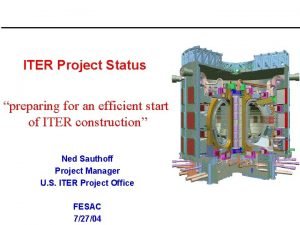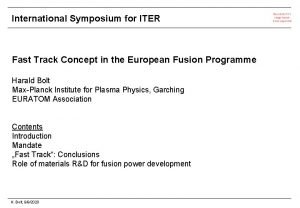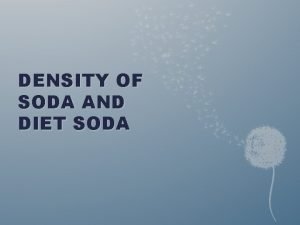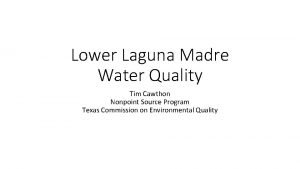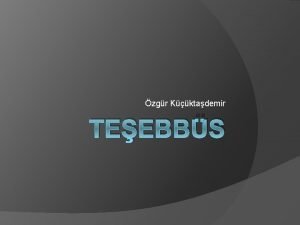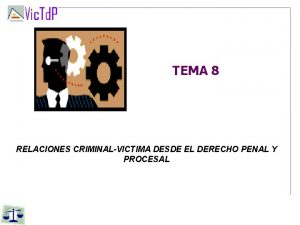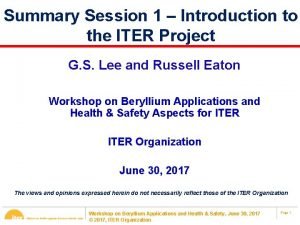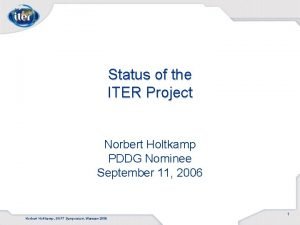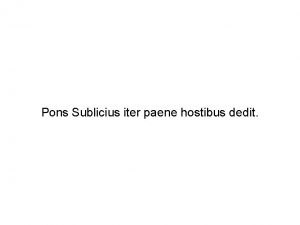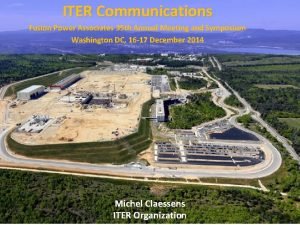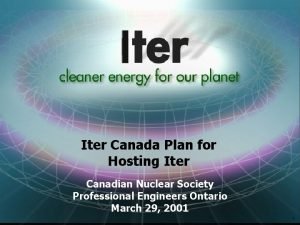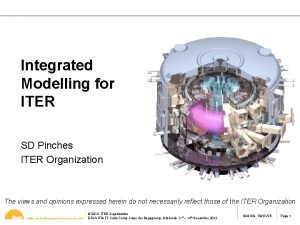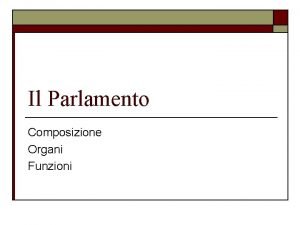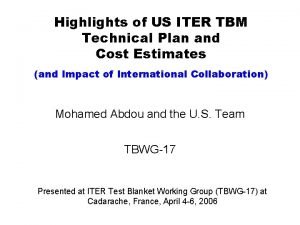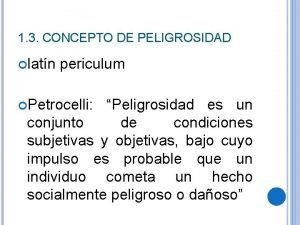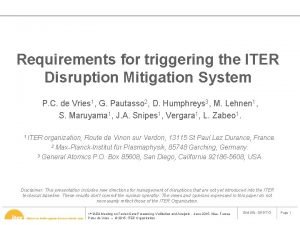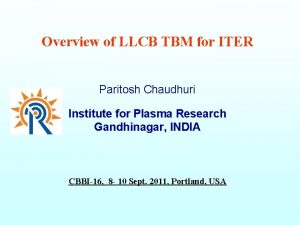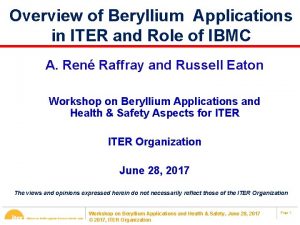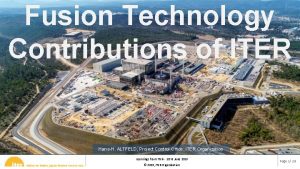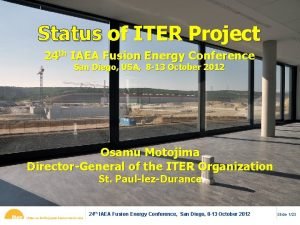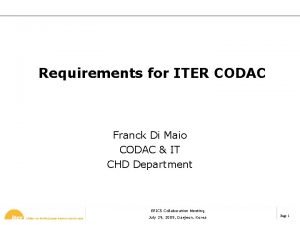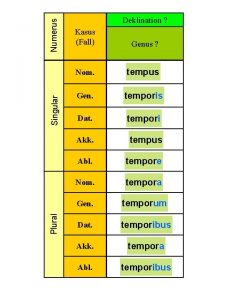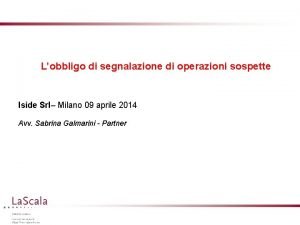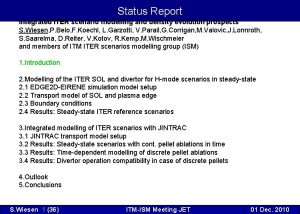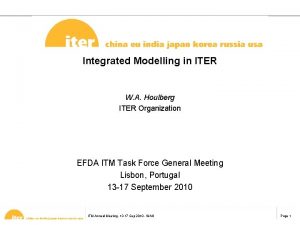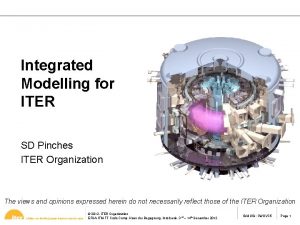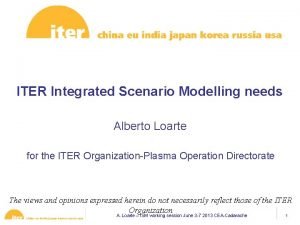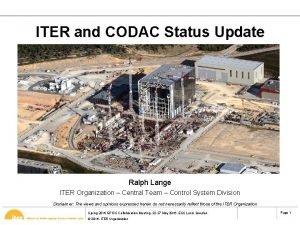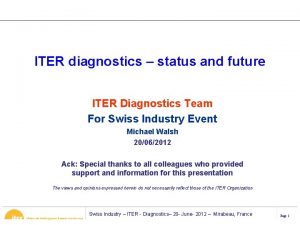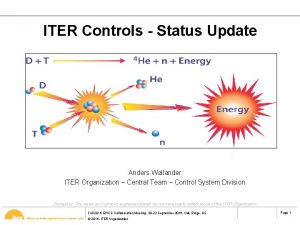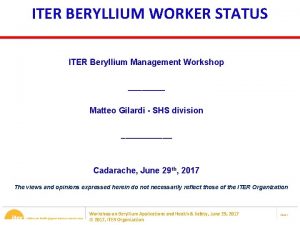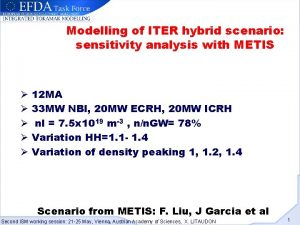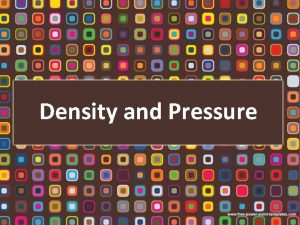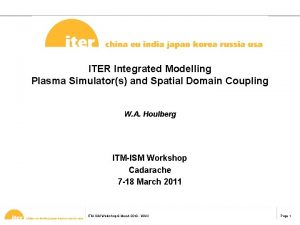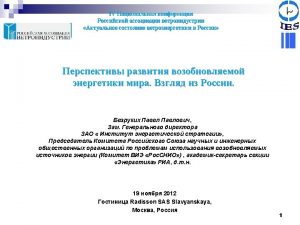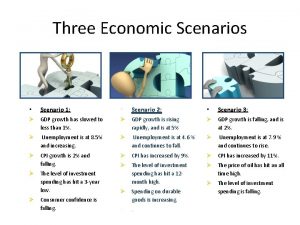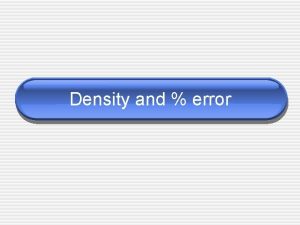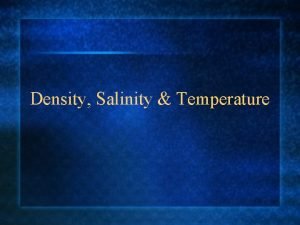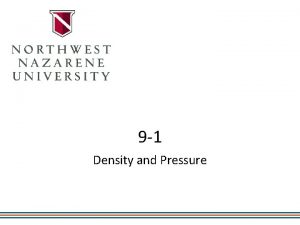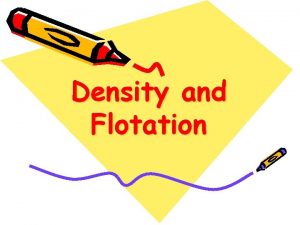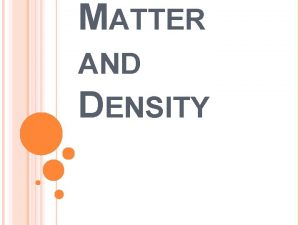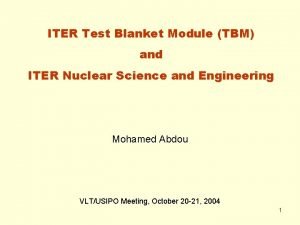Status Report Integrated ITER scenario modelling and density





































- Slides: 37

Status Report Integrated ITER scenario modelling and density evolution prospects S. Wiesen, P. Belo, F. Koechl, L. Garzotti, V. Parail, G. Corrigan, M. Valovic, J. Lonnroth, S. Saarelma, D. Reiter, V. Kotov, R. Kemp, M. Wischmeier and members of ITM ITER scenarios modelling group (ISM) 1. Introduction 2. Modelling of the ITER SOL and divertor for H-mode scenarios in steady-state 2. 1 EDGE 2 D-EIRENE simulation model setup 2. 2 Transport model of SOL and plasma edge 2. 3 Boundary conditions 2. 4 Results: Steady-state ITER reference scenarios 3. Integrated modelling of ITER scenarios with JINTRAC 3. 1 JINTRAC transport model setup 3. 2 Results: Steady-state scenarios with cont. pellet ablations in time 3. 3 Results: Time-dependent modelling of discrete pellet ablations 3. 4 Results: Divertor operation compatibility in case of discrete pellets 4. Outlook 5. Conclusions S. Wiesen 1 (36) ITM-ISM Meeting JET 01 Dec. 2010

Introduction (1): historic modelling w/ B 2 -EIRENE/SOLPS 4 • Kukushkin 2002: First 2 D multi-fluid modelling studies w/ B 2 -EIRENE of the current ITER reference design using an early neutral transport model (EIRENE 96): ITER operation in L-mode, focus on divertor operational regime: partial detachment • Pacher 2003: first consistent core-edge modelling attempt: combine previous B 2 EIRENE results with ASTRA. B 2 -EIRENE provided BCs for ICPS plasma model (separatrix or top pedestal conditions as functions of PSOL, pdiv, fcore) • Kukushkin 2003: sensitivity study w/ SOLPS 4(B 2 -EIRENE) to derive new scaling relations for nspx, Tespx, Tispx still assuming non-transient L-mode scenarios (result: Ti, Te are weak functions of all input parameters except PSOL). Here PSOL depends not only on fusion product but also on transport assumptions • Kukushkin 2005, Kotov 2007: new EIRENE model (EIRENE 04) coupled to B 2 includes much more molecular physics (molecule-ion elastic collisions, molec. assisted recombination, neutral viscosity, Lyman-line radiation opacity) the same scalings for upstream conditions can be applied when including a correction for the neutral pressure in the divertor pdiv • Kukushkin 2007: further sensitivity studies: varying gas-puff location and effect on plasma fuelling, variations in divertor dome geometry and effect on pdiv S. Wiesen 2 (36) ITM-ISM Meeting JET 01 Dec. 2010

Introduction (2): code-code benchmarking Preparational work done within the ITM & ISM activity (2007 -): • re-investigation of existing database on ITER edge plasma scenarios: SOLPS 4 simulation scaling laws for L-mode ITER scenarios (cf. A. Kukushkin, V. Kotov, et al…) necessary condition: partial detachment, critical limit 10 MW/m 2 • benchmark EDGE 2 D-EIRENE w/ ITER version of SOLPS 4 (S. Wiesen, V. Kotov) refinement of atomic and molecular physics necessary for Lmode scenarios here: we assume that we can amend neutral pressure in divertor affecting level of detachment simply by increasing gas-puff rate in the model “emulation of revised SOLPS 4 molecular physics model” • setting up of H-mode baseline scenario with EDGE 2 D-EIRENE (also SOLPS 5), transport model modification: transport barrier seeded impurities necessary to get rid of extra heat in SOL: combined seeded and intrinsic impurities radiative power loss: 20 -60 MW S. Wiesen 3 (36) ITM-ISM Meeting JET 01 Dec. 2010

Status Report Integrated ITER scenario modelling and density evolution prospects S. Wiesen, P. Belo, L. Garzotti, F. Koechl, V. Parail, G. Corrigan, M. Valovic, J. Lonnroth, S. Saarelma, D. Reiter, V. Kotov, R. Kemp, M. Wischmeier and members of ITM ITER scenarios modelling group (ISM) 1. Introduction 2. Modelling of the ITER SOL and divertor for H-mode scenarios in steady-state 2. 1 EDGE 2 D-EIRENE simulation model setup 2. 2 Transport model of SOL and plasma edge 2. 3 Boundary conditions 2. 4 Results: Steady-state ITER reference scenarios 3. Integrated modelling of ITER scenarios with JINTRAC 3. 1 JINTRAC transport model setup 3. 2 Results: Steady-state scenarios with cont. pellet ablations in time 3. 3 Results: Time-dependent modelling of discrete pellet ablations 3. 4 Results: Divertor operation compatibility in case of discrete pellets 4. Outlook 5. Conclusions S. Wiesen 4 (36) ITM-ISM Meeting JET 01 Dec. 2010

EDGE 2 D-EIRENE simulation model setup • 2 D simulation domain extends into edge (6 cm@OMP) • parallel transport classical, flux limited for electrons • sheath physics at targets (Bohm-criteria) • adhoc radial transport model (cf. next slide) • particle sources: core (mimic pellets): Gcore =2 e 21. . 1 e 23 s-1 top D 2 gas flux: Ggas = 1. 4 e 23 s-1 fixed omp Neon gas flux: GNe = 1 e 19. . 8 e 19 s-1 • particle sinks: pumping surface below divertor dome: albedo = 0. 94 L = A (1 -albedo) 36. 38 (TD 2/4) ~ 790 m 3/s • heat sources: Pedge=80 MW (1: 2 ratio ions/els) S. Wiesen 5 (36) ITM-ISM Meeting JET 01 Dec. 2010

Radial transport model of SOL and plasma edge spx 1, 4 prescribed in EDGE 2 D 1, 2 m^2/s 1, 0 L-mode 0, 8 0, 6 0, 4 H-mode 0, 2 0, 0 -10 -8 -6 -4 -2 0 2 4 dist. from OMP separatrix (cm) • assume that turbulent diffusive/advective transport in the edge is suppressed (ETB) • remnant: neo-classical transport theory predicts (low-n* banana regime): • but at this point: ELM averaging procedure, enhance transport artificially to be compatible with previous MHD stability and transport analysis (JETTO/MISHKA, continuous ELMmodel, Cadarache 2008) • two sets of transport coefficients: moderate confinement: ce = ci = 0. 3 m 2/s, D = 0. 1 m 2/s, no pinch good confinement: ce = ci = 0. 2 m 2/s, D = 0. 07 m 2/s, no pinch S. Wiesen 6 (36) ITM-ISM Meeting JET 01 Dec. 2010

Status Report Integrated ITER scenario modelling and density evolution prospects S. Wiesen, P. Belo, L. Garzotti, F. Koechl, V. Parail, G. Corrigan, M. Valovic, J. Lonnroth, S. Saarelma, D. Reiter, V. Kotov, R. Kemp, M. Wischmeier and members of ITM ITER scenarios modelling group (ISM) 1. Introduction 2. Modelling of the ITER SOL and divertor for H-mode scenarios in steady-state 2. 1 EDGE 2 D-EIRENE simulation model setup 2. 2 Transport model of SOL and plasma edge 2. 3 Boundary conditions 2. 4 Results: Steady-state ITER reference scenarios 3. Integrated modelling of ITER scenarios with JINTRAC 3. 1 JINTRAC transport model setup 3. 2 Results: Steady-state scenarios with cont. pellet ablations in time 3. 3 Results: Time-dependent modelling of discrete pellet ablations 3. 4 Results: Divertor operation compatibility in case of discrete pellets 4. Outlook 5. Conclusions S. Wiesen 7 (36) ITM-ISM Meeting JET 01 Dec. 2010

EDGE 2 D-EIRENE results (1): separatrix quantities pellet induced non-transient ion-flux scan, fixed GNe = 1 e 19 s-1 nespx Te spx S. Wiesen 8 (36) nispx Tispx ITM-ISM Meeting JET 01 Dec. 2010

EDGE 2 D-EIRENE results (2): SOL radiative fraction pellet induced ion-flux scan seeded Neon gas scan fixed GNe = 1 e 19 s-1 fixed Gcore = 2 e 22 s-1 S. Wiesen 9 (36) ITM-ISM Meeting JET 01 Dec. 2010

EDGE 2 D-EIRENE results (3): target heat-loads Inner target S. Wiesen 10 (36) Outer target ITM-ISM Meeting JET 01 Dec. 2010

Status Report Integrated ITER scenario modelling and density evolution prospects S. Wiesen, P. Belo, L. Garzotti, F. Koechl, V. Parail, G. Corrigan, M. Valovic, J. Lonnroth, S. Saarelma, D. Reiter, V. Kotov, R. Kemp, M. Wischmeier and members of ITM ITER scenarios modelling group (ISM) 1. Introduction 2. Modelling of the ITER SOL and divertor for H-mode scenarios in steady-state 2. 1 EDGE 2 D-EIRENE simulation model setup 2. 2 Transport model of SOL and plasma edge 2. 3 Boundary conditions 2. 4 Results: Steady-state ITER reference scenarios 3. Integrated modelling of ITER scenarios with JINTRAC 3. 1 JINTRAC transport model setup 3. 2 Results: Steady-state scenarios with cont. pellet ablations in time 3. 3 Results: Time-dependent modelling of discrete pellet ablations 3. 4 Results: Divertor operation compatibility in case of discrete pellets 4. Outlook 5. Conclusions S. Wiesen 11 (36) ITM-ISM Meeting JET 01 Dec. 2010

Integrated ITER baseline scenario density evolution modelling • 2 D tool: EDGE 2 D-EIRENE (and other, like SOLPS) can provide separatrix conditions to core models: ne, Te, G 0, Gimp as function of upstream conditions: PSOL, GSOL from core plus necessary limitations and constraints: detached divertor (Ptarget < 10 MW/m 2 in steady-state) neutral molecular physics (not scalable!), pump efficiency avoidance of density limits and MARFEs (over-/underfuelling) impurity transport and radiation (seeded and intrinsic, mixed materials), … above approach not self-consistent, example: transient pellets or ELMs upstream conditions vary strongly in time use a more integrated approach, ie combine core and SOL physics • currently available tool within ISM: JINTRAC/COCONUT (ie JETTO + EDGE 2 D) (later possibly ETS and Kepler) S. Wiesen 12 (36) ITM-ISM Meeting JET 01 Dec. 2010

JINTRAC simulation suite Transport model Equilibrium Impurities B/g. B, ETB: NCLASS ESCO SANCO MHD Other models cont. ELM-model Sawteeth pellet ablation: HPI 2 fusion: DITRAN-2 EDGE 2 D JETTO Core profiles 1 D core transport boundary conditions 2 D SOL/edge transport (fluid approx) EIRENE 3 D neutral kinetic particle Monte-Carlo code 2 D SOL solution Heating Cold core neutrals for NBI: PENCIL FRANTIC parallel and radial SOL transport models, Neutral models S. Wiesen 13 (36) ITM-ISM Meeting JET 01 Dec. 2010

Status Report Integrated ITER scenario modelling and density evolution prospects S. Wiesen, P. Belo, L. Garzotti, F. Koechl, V. Parail, G. Corrigan, M. Valovic, J. Lonnroth, S. Saarelma, D. Reiter, V. Kotov, R. Kemp, M. Wischmeier and members of ITM ITER scenarios modelling group (ISM) 1. Introduction 2. Modelling of the ITER SOL and divertor for H-mode scenarios in steady-state 2. 1 EDGE 2 D-EIRENE simulation model setup 2. 2 Transport model of SOL and plasma edge 2. 3 Boundary conditions 2. 4 Results: Steady-state ITER reference scenarios 3. Integrated modelling of ITER scenarios with JINTRAC 3. 1 JINTRAC transport model setup 3. 2 Results: Steady-state scenarios with cont. pellet ablations in time 3. 3 Results: Time-dependent modelling of discrete pellet ablations 3. 4 Results: Divertor operation compatibility in case of discrete pellets 4. Outlook 5. Conclusions S. Wiesen 14 (36) ITM-ISM Meeting JET 01 Dec. 2010

JINTRAC steady-state simulations for ITER baseline scenario • modified Bohm/gyro. Bohm transport in core • in the edge: cont. ELM-model, critical pressure gradient acrit = 1. 7 • Paux = 33 MW, Pfusion: DITRAN-2 target Pfus ~ 500 MW (Q ~ 10) • Zeff=1. 7 (Prad = 43 MW fixed) • cont. pellet model: fixed gaussian source profile in time • Spellet = 1. 5 e 22 s-1, Dpellet=0. 1, rpellet= 0. 9 (case A), 0. 8 (case B) (plasmoid drift) • in far-SOL: fixed transport: D=0. 3 m 2/s, ci=ce=1. 0 m 2/s • in near-SOL: ETB transport prolonged into SOL (0. 5 cm @ omp) • DT-flux coming from plasma core (JETTO) combined into single D-flux into SOL: GDEDGE 2 D = GDJETTO+GTJETTO • neutral recycling flux GD 0 from SOL split up 50/50 GD 0/GT 0 when entering core S. Wiesen 15 (36) ITM-ISM Meeting JET 01 Dec. 2010

JINTRAC results, steady-state case (1) case A case B a ne Te Ti el. Pa ion. Pa S. Wiesen 16 (36) ITM-ISM Meeting JET 01 Dec. 2010

JINTRAC results, steady-state case (2) Outer-midplane profiles ne case A ne case B Ti case A Ti case B Te case A Te case B S. Wiesen 17 (36) ITM-ISM Meeting JET 01 Dec. 2010

JINTRAC results, steady-state case (3) inner target outer target Te case A Te case B qheat case A qheat case B S. Wiesen 18 (36) Te case A Te case B qheat case A qheat case B ITM-ISM Meeting JET 01 Dec. 2010

Status Report Integrated ITER scenario modelling and density evolution prospects S. Wiesen, P. Belo, L. Garzotti, F. Koechl, V. Parail, G. Corrigan, M. Valovic, J. Lonnroth, S. Saarelma, D. Reiter, V. Kotov, R. Kemp, M. Wischmeier and members of ITM ITER scenarios modelling group (ISM) 1. Introduction 2. Modelling of the ITER SOL and divertor for H-mode scenarios in steady-state 2. 1 EDGE 2 D-EIRENE simulation model setup 2. 2 Transport model of SOL and plasma edge 2. 3 Boundary conditions 2. 4 Results: Steady-state ITER reference scenarios 3. Integrated modelling of ITER scenarios with JINTRAC 3. 1 JINTRAC transport model setup 3. 2 Results: Steady-state scenarios with cont. pellet ablations in time 3. 3 Results: Time-dependent modelling of discrete pellet ablations 3. 4 Results: Divertor operation compatibility in case of discrete pellets 4. Outlook 5. Conclusions S. Wiesen 19 (36) ITM-ISM Meeting JET 01 Dec. 2010

Transient modelling of ITER baseline density evolution • new feature: transient pellet ablation model HPI 2 provides time-dependent source profiles for given pellet injection configuration • pellets from high-field side, 6 e 21 atoms per pellet 50/50 D/T at v=300 m/s • assume plasmoid drift: 100%, 50% • pellet trigger thresholds: minimum top pedestal density: 1. 05, 0. 88, 0. 70 [1020 m-3] • JETTO transport model: B/g. B, sawteeth, cont. ELM model: acrit = 1. 7 (1. 5, 1. 3) • fusion product: DITRAN-2 • NBI aux power: 33 MW PENCIL, Pradcore=43 MW fixed (Zeff=1. 7 flat) • EDGE 2 D-EIRENE transport model: as before, Ggas=1. 4 e 23 s-1 fixed, Prad. SOL=60 MW fixed (no impurity transport yet) S. Wiesen 20 (36) ITM-ISM Meeting JET 01 Dec. 2010

50% plasmoid drift (1) neped = 1. 05 e 20 m-3 neped = 0. 88 e 20 m-3 neped = 0. 70 e 20 m-3 <ne> <Te> neped Teped S. Wiesen 21 (36) ITM-ISM Meeting JET 01 Dec. 2010

50% plasmoid drift (2) neped = 1. 05 e 20 m-3 neped = 0. 88 e 20 m-3 neped = 0. 70 e 20 m-3 Pfus Pesep Pisep S. Wiesen 22 (36) ITM-ISM Meeting JET 01 Dec. 2010

50% plasmoid drift (3) neped = 1. 05 e 20 m-3 neped = 0. 88 e 20 m-3 neped = 0. 70 e 20 m-3 t = 339. 3 s ne Te Pae S. Wiesen 23 (36) ITM-ISM Meeting JET 01 Dec. 2010

100% plasmoid drift (1) neped = 1. 05 e 20 m-3 neped = 0. 88 e 20 m-3 neped = 0. 70 e 20 m-3 <ne> <Te> neped Teped S. Wiesen 24 (36) ITM-ISM Meeting JET 01 Dec. 2010

100% plasmoid drift (2) neped = 1. 05 e 20 m-3 neped = 0. 88 e 20 m-3 neped = 0. 70 e 20 m-3 Pfus Pesep Pisep S. Wiesen 25 (36) ITM-ISM Meeting JET 01 Dec. 2010

100% plasmoid drift (3) neped = 1. 05 e 20 m-3 neped = 0. 88 e 20 m-3 neped = 0. 70 e 20 m-3 t = 339. 3 s ne Te Pae S. Wiesen 26 (36) ITM-ISM Meeting JET 01 Dec. 2010

50% plasmoid drift, low density case, acrit variation (1) acrit = 1. 7 acrit = 1. 5 acrit = 1. 3 <ne> <Te> neped Teped S. Wiesen 27 (36) ITM-ISM Meeting JET 01 Dec. 2010

50% plasmoid drift, low density case, acrit variation (2) acrit = 1. 7 acrit = 1. 5 acrit = 1. 3 Pfus Pesep Pisep S. Wiesen 28 (36) ITM-ISM Meeting JET 01 Dec. 2010

50% plasmoid drift, low density case, acrit variation (3) acrit = 1. 7 acrit = 1. 5 acrit = 1. 3 t = 337. 75 s ne Te Pae S. Wiesen 29 (36) ITM-ISM Meeting JET 01 Dec. 2010

Status Report Integrated ITER scenario modelling and density evolution prospects S. Wiesen, P. Belo, L. Garzotti, F. Koechl, V. Parail, G. Corrigan, M. Valovic, J. Lonnroth, S. Saarelma, D. Reiter, V. Kotov, R. Kemp, M. Wischmeier and members of ITM ITER scenarios modelling group (ISM) 1. Introduction 2. Modelling of the ITER SOL and divertor for H-mode scenarios in steady-state 2. 1 EDGE 2 D-EIRENE simulation model setup 2. 2 Transport model of SOL and plasma edge 2. 3 Boundary conditions 2. 4 Results: Steady-state ITER reference scenarios 3. Integrated modelling of ITER scenarios with JINTRAC 3. 1 JINTRAC transport model setup 3. 2 Results: Steady-state scenarios with cont. pellet ablations in time 3. 3 Results: Time-dependent modelling of discrete pellet ablations 3. 4 Results: Divertor operation compatibility in case of discrete pellets 4. Outlook 5. Conclusions S. Wiesen 30 (36) ITM-ISM Meeting JET 01 Dec. 2010

SOL response on pellets High density case, 50% plasmoid drift log ne S. Wiesen 31 (36) log Te ITM-ISM Meeting JET 01 Dec. 2010

High-density case, 50% plasmoid drift Inner target Outer target ptarget/pomp log Te Gtarget • both targets re-attach when pellet ablation peaks since PSOL increases significantly due to high fusion product in high-density S. Wiesen 32 (36) ITM-ISM Meeting JET 01 Dec. 2010

medium-density case, 50% plasmoid drift Inner target Outer target ptarget/pomp log Te Gtarget • the inner target stays detached whilst the outer target reattaches at pellet ablation time S. Wiesen 33 (36) ITM-ISM Meeting JET 01 Dec. 2010

low-density case, 50% plasmoid drift Inner target Outer target ptarget/pomp log Te Gtarget • in the low-density case both targets are completely detached very difficult to control • in simulation: core density rises monotonically density limit (the latter not treated correctly, no MARFEs: fixed Prad. SOL=60 MW) S. Wiesen 34 (36) ITM-ISM Meeting JET 01 Dec. 2010

Status Report Integrated ITER scenario modelling and density evolution prospects S. Wiesen, P. Belo, L. Garzotti, F. Koechl, V. Parail, G. Corrigan, M. Valovic, J. Lonnroth, S. Saarelma, D. Reiter, V. Kotov, R. Kemp, M. Wischmeier and members of ITM ITER scenarios modelling group (ISM) 1. Introduction 2. Modelling of the ITER SOL and divertor for H-mode scenarios in steady-state 2. 1 EDGE 2 D-EIRENE simulation model setup 2. 2 Transport model of SOL and plasma edge 2. 3 Boundary conditions 2. 4 Results: Steady-state ITER reference scenarios 3. Integrated modelling of ITER scenarios with JINTRAC 3. 1 JINTRAC transport model setup 3. 2 Results: Steady-state scenarios with cont. pellet ablations in time 3. 3 Results: Time-dependent modelling of discrete pellet ablations 3. 4 Results: Divertor operation compatibility in case of discrete pellets 4. Outlook 5. Conclusions S. Wiesen 35 (36) ITM-ISM Meeting JET 01 Dec. 2010

New (redefined) ISM-P 3 -2011 -08 project ISM Task description Task name: Integrated modelling of ITER H-mode scenario including impurities (seeded and intrinsic) Project : P 3 (Predictive scenario modelling for ITER, JT-60 SA, DEMO…) Task reference: ISM-P 3 -2011 -08 Version: 1 Date of revision: Start date: 2010 Tentative completion date: 2011 or later Physicist involved: S. Wiesen, F. Koechl, L. Garzotti, P. Belo, J. Lonnroth, V. Parail Codes involved and version: JINTRAC (JETTO/SANCO, EDGE 2 D-EIRENE) Machine and pulses numbers: ITER baseline Detailed Task description: Previous integrated core-pedestal-SOL modelling of ITER H-mode baseline scenario has been performed for pure D-T plasma with pellets. This task will be extended to include the impurity evolution in self-consistent simulations for testing the impurity effect on plasma performance: radiation, dilution, impurity dependent transport (if theory-based models are used? ). Density limit, MARFEs, refine neutral model (molecular processes), discrete ELMs S. Wiesen 36 (36) ITM-ISM Meeting JET 01 Dec. 2010

xxxx S. Wiesen 37 (36) ITM-ISM Meeting JET 01 Dec. 2010
 Iter project status
Iter project status Difference between status report and progress report
Difference between status report and progress report How to create a scenario summary report in excel
How to create a scenario summary report in excel Create a scenario summary report
Create a scenario summary report What is specific gravity
What is specific gravity Planar density bcc
Planar density bcc Linear density of atoms
Linear density of atoms Crude population density vs physiological density
Crude population density vs physiological density Nda full dac
Nda full dac Egypt physiological density
Egypt physiological density Fast and iter
Fast and iter Coke vs diet coke density lab report
Coke vs diet coke density lab report Lanfh
Lanfh Tceq
Tceq Iter criminis
Iter criminis Pareja penal y pareja criminal
Pareja penal y pareja criminal Iter ipa
Iter ipa Iter countries
Iter countries Pons sublicius iter paene
Pons sublicius iter paene Iter salvifico
Iter salvifico Iter progettuale
Iter progettuale Iter members
Iter members Iter countries
Iter countries Iter members
Iter members Il procedimento legislativo
Il procedimento legislativo Iter cost
Iter cost Iter criminis fases
Iter criminis fases Iter victimae etapas
Iter victimae etapas Iter
Iter Iter tbm
Iter tbm Iter project associate
Iter project associate Longum iter est per praecepta breve et efficax per exempla
Longum iter est per praecepta breve et efficax per exempla Iter
Iter Iter fusion
Iter fusion Iter fusion
Iter fusion Iter codac
Iter codac Genus numerus kasus
Genus numerus kasus Iter segnalazione operazione sospetta schema
Iter segnalazione operazione sospetta schema
